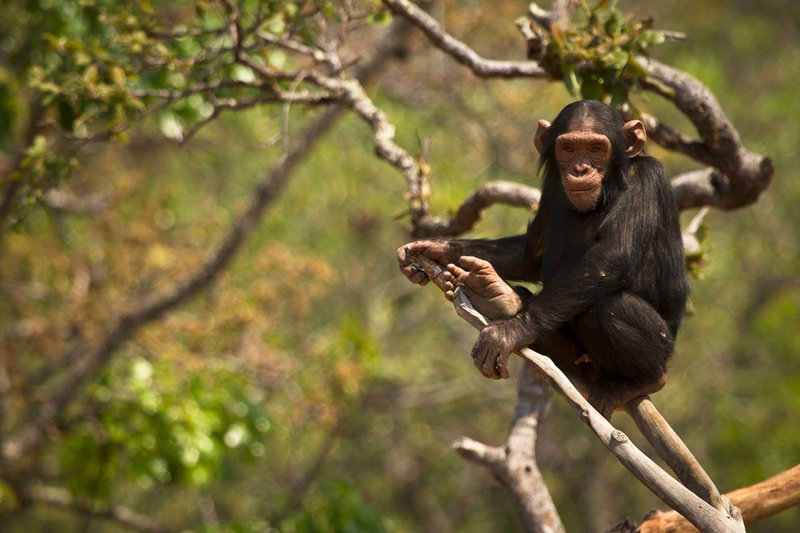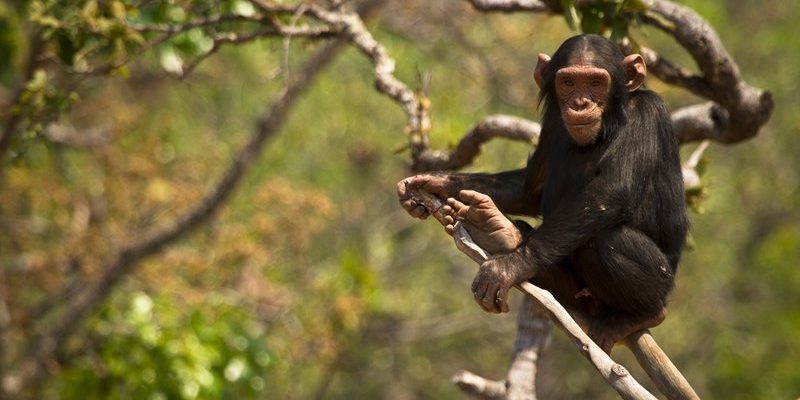
Chimpanzees are social animals and often live in groups, which can add an extra layer to your experience. While they can be playful and curious, they’re also wild animals with unpredictable behaviors. So, whether you’re hiking in a national park or exploring a jungle, understanding how to interact (or not interact) with chimpanzees is crucial. Let’s break this down into straightforward steps and tips.
Stay Calm and Assess the Situation
When you first spot a chimpanzee, the first thing to do is stay calm. It might be easy to panic or feel excited, but remember—acting too quickly can escalate the situation. Take a deep breath, and try to assess how many chimpanzees are around. Are they alone or in a group? Are they showing any aggressive signs, like loud vocalizations or charging?
Here’s the thing: it’s essential to recognize their body language. If the chimp looks curious and is observing you, it’s usually best to stay still and avoid making sudden movements. However, if it seems distressed or aggressive, that’s a different story. In that case, slowly back away without turning your back to them. You wouldn’t want to provoke a wild animal, after all!
Keep Your Distance
If you find yourself too close to a chimp, it’s vital to keep your distance. Even though they may look friendly, chimpanzees are wild animals and can be unpredictable. Experts recommend staying at least 50 yards away—this helps both you and the chimp feel comfortable.
Why keep your distance? Well, chimpanzees can feel threatened by humans invading their space. They’re incredibly strong and can defend their territory if they feel it’s being compromised. So, enjoy watching them from afar, just like you would with any wild animal. You wouldn’t want a bear wandering into your tent, would you?
Do Not Feed the Chimpanzees
Feeding wildlife may sound harmless, but it can be dangerous. You might think, “What’s a little banana going to do?” However, feeding chimpanzees can lead them to associate humans with food. This can create risky situations for both the chimps and future hikers.
When they start expecting food from humans, they may approach closer than they should, leading to potential aggression or clashes. Additionally, feeding them can disrupt their natural behaviors and diets. So, be sure to enjoy the scene without trying to share your snacks!
Avoid Direct Eye Contact
While making eye contact is generally a sign of connection in human communication, the same isn’t true for chimpanzees. Direct eye contact can be interpreted as a threat, especially if you’re too close. Instead, keep your body relaxed and your gaze indirect.
You might be wondering, “But I want to see them!” It’s perfectly okay to glance at them while ensuring you’re not staring them down. Think of it like casually observing a painting in a gallery—you appreciate it without bombarding it with your full attention.
Know When to Leave the Area
If the encounter starts to feel intense or the chimpanzees appear agitated, it’s time to leave the area. This is about prioritizing safety—for you and the chimps. Remember, you’re in their territory, and they have every right to feel secure.
When backing away, do so slowly and confidently, maintaining a peaceful demeanor. If they follow you, make sure you move at a controlled pace. It’s like leaving a party when the vibes aren’t right: sometimes, it’s just best to make a graceful exit.
Be Aware of Your Surroundings
Understanding your surroundings is crucial when you’re in the wild, especially when chimpanzees are involved. Pay attention to the environment: Are there other animals nearby? Is there adequate cover, like trees or bushes? Knowing your terrain can help you respond to an encounter better.
For instance, if a chimpanzee encounters you in an open area, it may feel cornered and become aggressive. If you’re near trees, having a potential escape route can provide a sense of security. The more prepared you are, the more confident you’ll feel, which is key in any wildlife encounter.
Understanding Their Behavior
Chimpanzees, like humans, express a range of emotions and behaviors. Learning a bit about their social structure and communication can help you read their cues better. They often communicate through vocalizations, facial expressions, and body movements.
You might see them grooming each other or playing, which typically indicates they’re relaxed. However, if they’re vocalizing loudly or displaying aggressive postures, it’s best to think twice about sticking around. Understanding their social dynamics can turn your encounter into a fascinating learning experience rather than a frightful one.
Consider Other Wildlife Encounters
While encountering a chimpanzee is unique, being prepared for other wildlife is essential too. Animals like monkeys, snakes, or even large mammals can inhabit the same areas. Just like with chimps, each has its own set of behaviors and threats.
Educating yourself about these animals before your trip can help you feel more at ease. It’s like knowing the rules of a game before you play—you’ll feel more confident in your moves. So whether it’s a curious monkey or a quietly slithering snake, being aware of your surroundings will create safer, more enjoyable experiences.
In conclusion, encountering a chimpanzee in the wild can be thrilling, but it’s vital to respect their space and safety. By staying calm, keeping your distance, and understanding their behavior, you’ll ensure a positive interaction. The next time you find yourself in nature, remember these tips, and you can enjoy the wonder of wildlife while staying safe!

